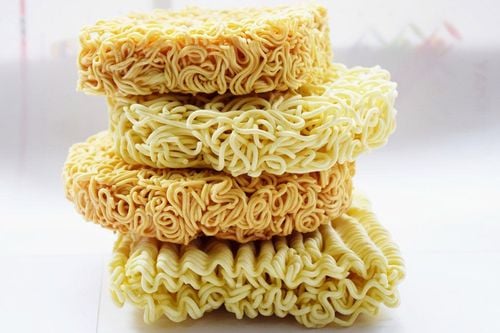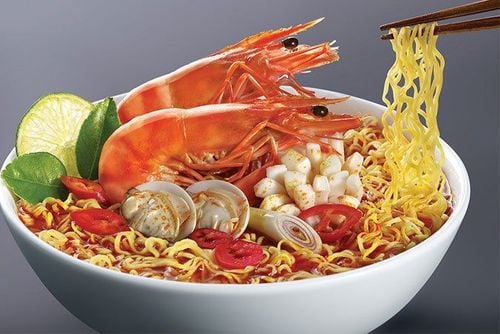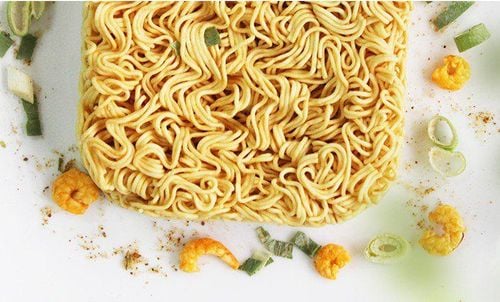This is an automatically translated article.
Ramen is a famous and popular instant noodle in Japan, because of its convenience and reasonable price. However, this type of instant noodles often contains very few essential nutrients for the body, even regular consumption can lead to some health problems.
1. Is it good to eat a lot of Ramen noodles?
Ramen noodles are made from flour, vegetable oils and some other flavorings. This type of noodle is usually produced mainly in the form of packaging, can be prepared with boiling water or cooked in the microwave.
1.1 Lack of essential nutrients Normally, a serving of instant Ramen noodles will provide the following nutritional components:
Calories: 188 Carbs: 27 grams Total fat: 7 grams Protein: 5 grams Fiber: 1 gram Sodium: 891 mg Thiamine: 16% RDI Manganese: 10% RDI Folate: 13% RDI Iron: 9% RDI Niacin: 9% RDI Riboflavin: 6% RDI RDI: Reference Daily Intake
Although Ramen noodles are made from wheat flour and fortified with synthetic forms of some nutrients like: Iron and B vitamins to make them more nutritious. However, this type of noodle still lacks a lot of essential nutrients for the body, such as: Protein, vitamins A, C, B12, fiber, magnesium and potassium.
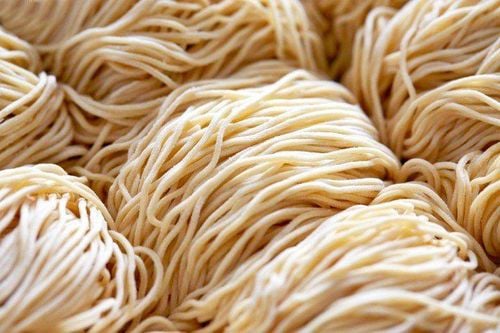
Mì Ramen được làm từ bột mì và được bổ sung các chất dinh dưỡng thiết yếu
1.2 High Sodium Content Sodium is a mineral that is essential for the body's activities. However, consuming too much sodium through the diet can have a number of negative health effects.
One of the factors that contribute to excess sodium in the body is processed foods, including packaged foods like Ramen noodles.
In fact, a diet high in salt is strongly associated with an increased risk of stomach cancer, heart disease and stroke. In addition, for people who are sensitive to salt can lead to increased blood pressure, causing damage to the heart and kidneys.
As recommended by the World Health Organization, each person should consume only 2 grams of sodium per day. Meanwhile, instant ramen noodles are very high in sodium, one packet contains about 1,760 mg of sodium, which corresponds to 88% of the RDI for sodium. So, just consuming a packet of Ramen noodles per day can lead to the risk of imbalance and difficulty in controlling the amount of sodium in the body.
1.3 Contains MSG and the antioxidant additive Tert-Butylhydroquinone Like many other processed foods, Instant Ramen noodles contain ingredients such as flavor enhancers and preservatives, which can cause harmful effects. Tert-Butylhydroquinone (TBHQ), is a common ingredient in instant ramen noodles. This is a type of preservative, often used to extend shelf life and prevent processed foods from spoiling. TBHQ are considered safe in small doses, but long-term exposure to them can lead to nerve damage, increase the risk of lymphoma, and cause liver enlargement. Besides, some people exposed to TBHQ have had vision disturbances, even DNA damage.
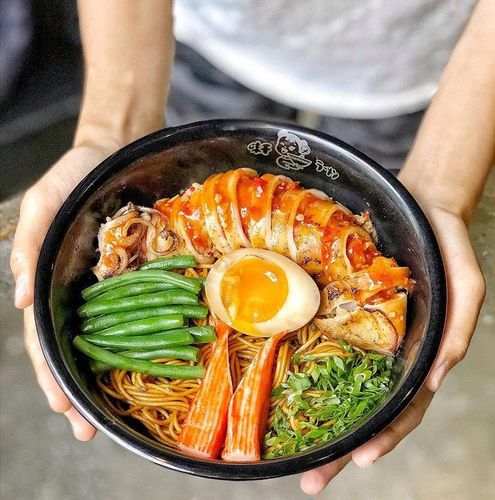
Mì Ramen ăn liền có chứa chất tăng cường hương vị và chất bảo quản
Another controversial ingredient present in instant ramen is monosodium glutamate (MSG). This is an additive used to enhance the flavor of salty foods and make them more palatable. According to research, regular consumption of MSG can cause noticeable symptoms such as: Headache, nausea, high blood pressure, muscle weakness, muscle tension and redness of the skin.
2. Should you avoid eating Ramen noodles?
Although occasionally eating Ramen noodles will not cause harm to health, however, if regularly in large quantities, it can affect the quality of the diet, and entail a number of other serious consequences for the body. with health.
In addition, regular consumption of instant noodles also increases the risk of metabolic syndrome. This is a group of symptoms, including excess belly fat, high blood pressure, high blood sugar, and abnormal blood lipids. Therefore, it is best to limit your consumption of instant ramen noodles and not use them as a main meal replacement on a regular basis.

Người dùng nên hạn chế ăn mì Ramen ăn liền
3. How to make Ramen more healthy?
For those who like to eat instant Ramen noodles, there are a few ways to make this convenient dish healthier:
Add vegetables: You can add fresh vegetables or already cooked vegetables. Cook in a bowl of Ramen noodles, such as carrots, broccoli, onions or mushrooms to replenish nutrients that are lacking in the noodles. Protein supplements: Since ramen noodles have very little protein, you can add protein-rich food sources such as eggs, chicken, fish or tofu to keep you fuller for longer. Choose low-sodium Ramen: There are now many types of Ramen that are low in sodium, so you can significantly reduce the amount of salt in the dish. No flavor packs: You can make your own delicious broth for your bowl of Ramen by mixing low-sodium chicken stock with fresh herbs and spices to help reduce the content of the Ramen. sodium.
Please dial HOTLINE for more information or register for an appointment HERE. Download MyVinmec app to make appointments faster and to manage your bookings easily.
References: Healthline.comMORE
Bread and Diet Facts Nutritional value of oats Brown rice vs white rice: Which is better?





